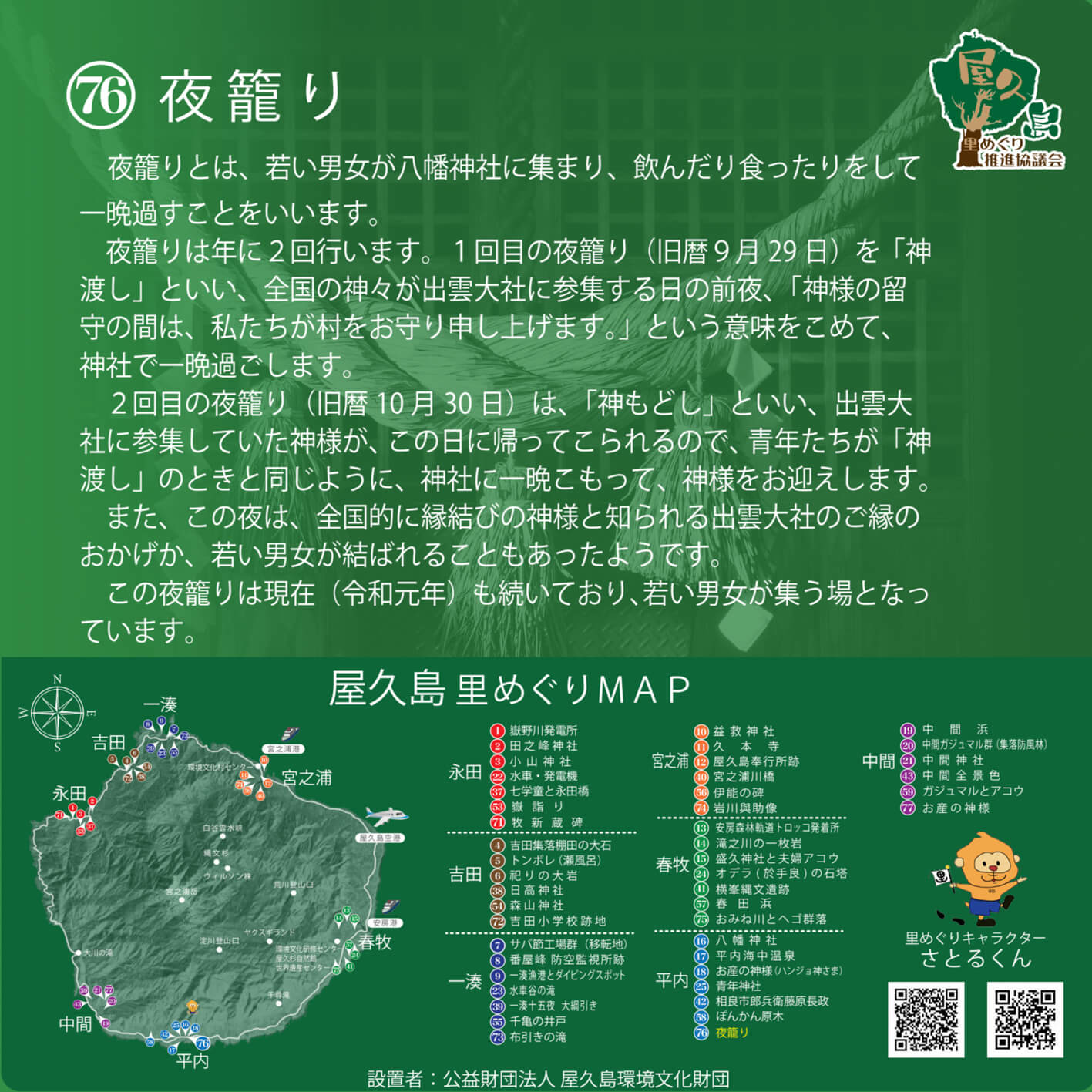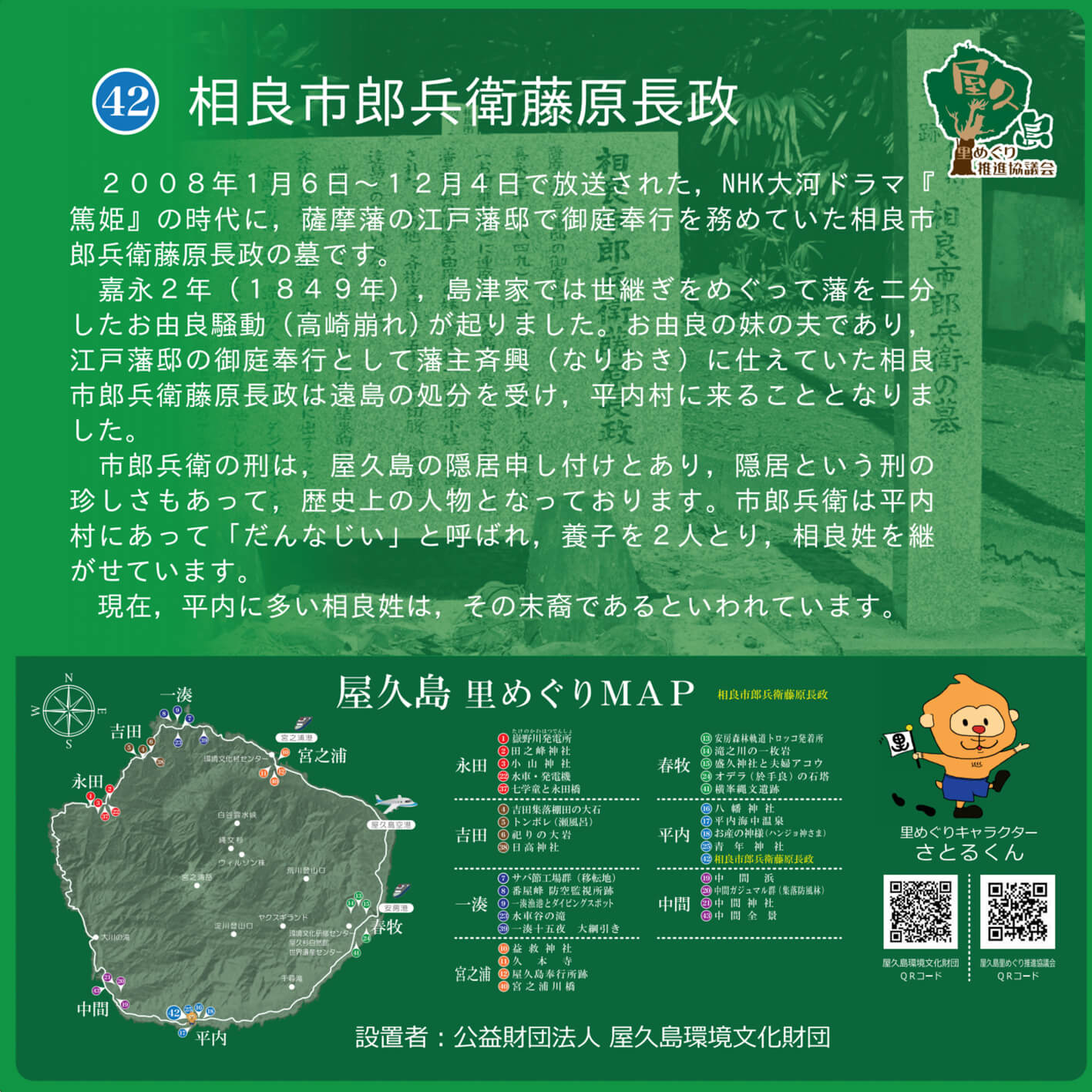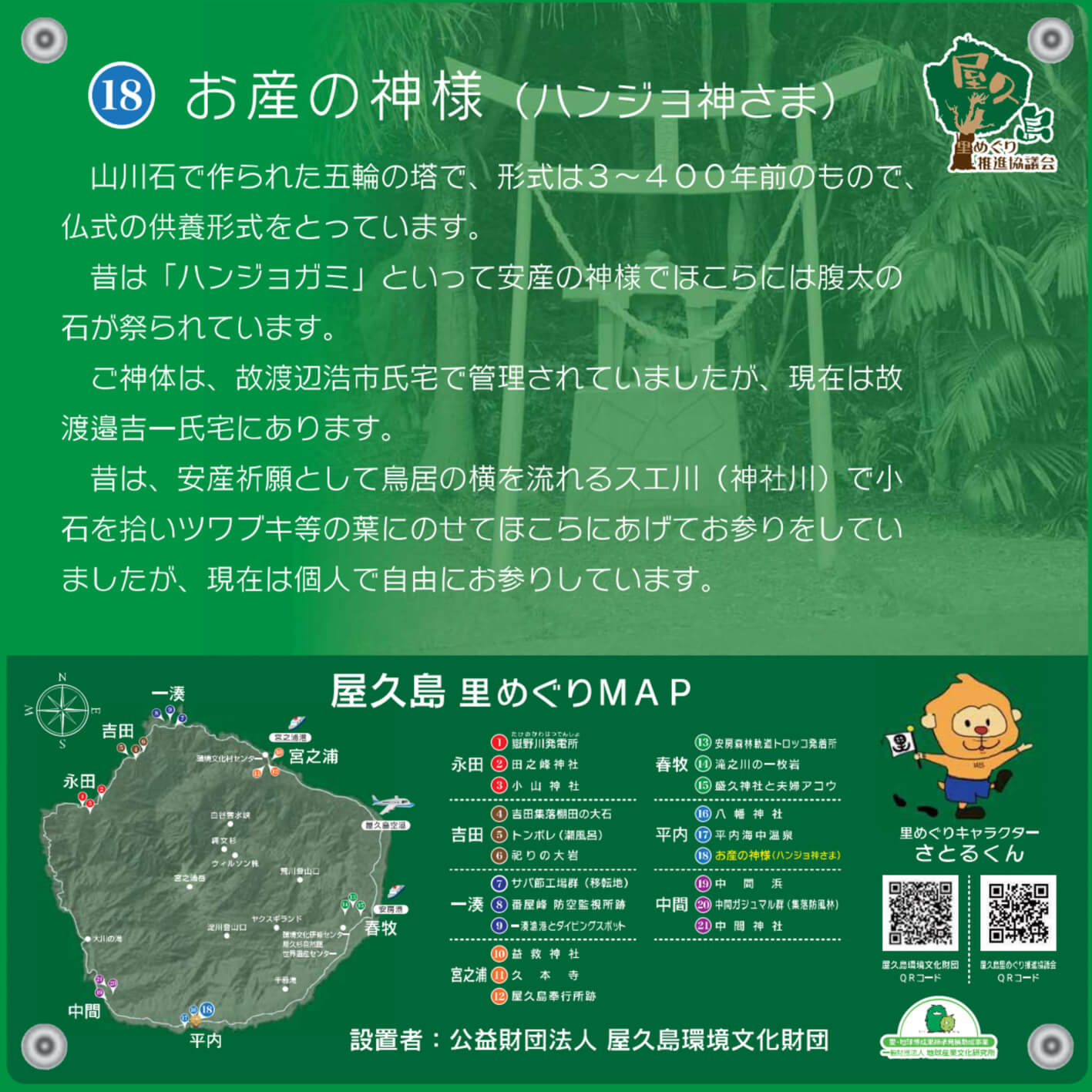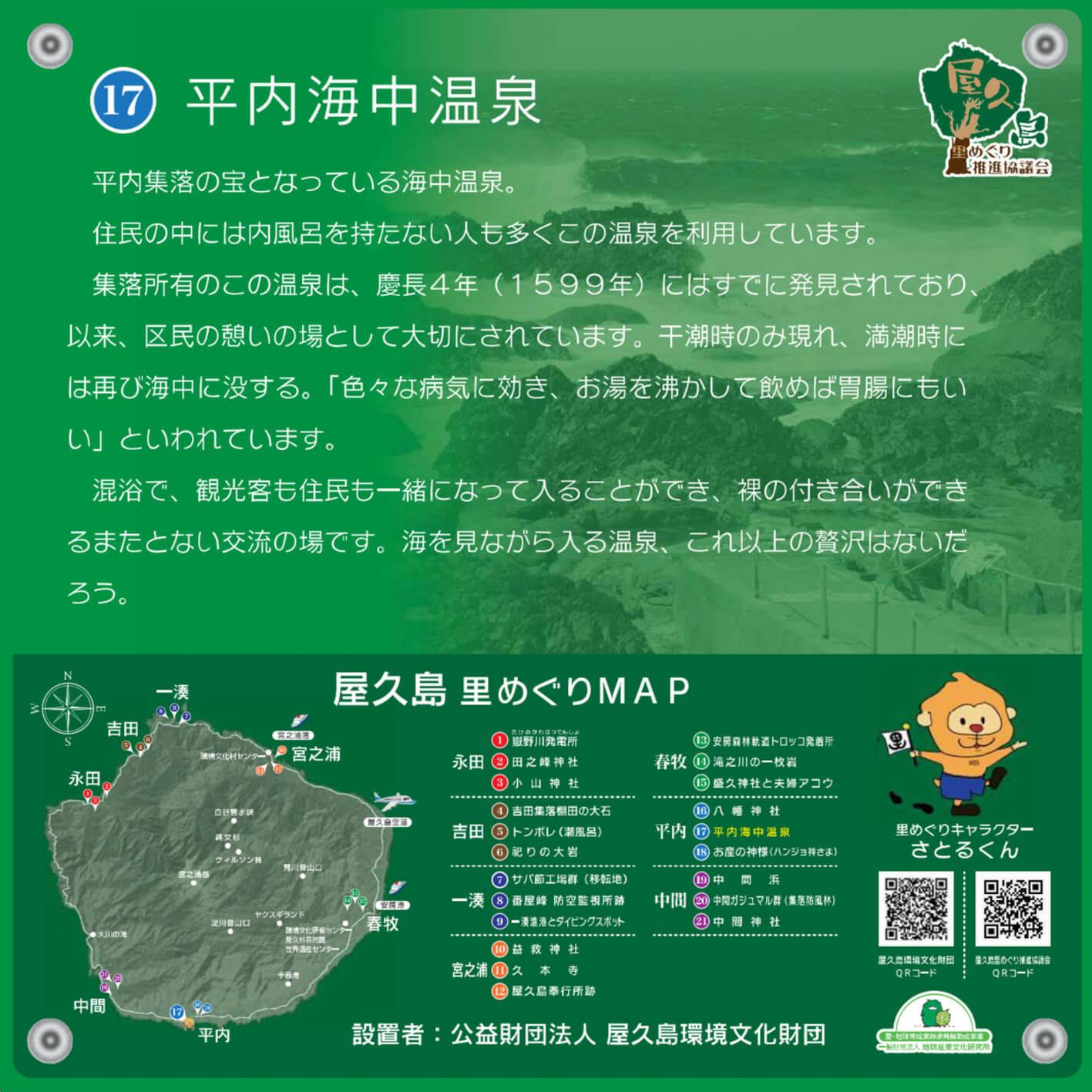hirauchi
Yagomori
- Modification: 2023/12/27
- Area: hirauchi
Yagomori refers to an ancient tradition of young men and women gathering at Hachiman Shrine to drink, feast, make merry, and spend the night.
Yagomori occurs twice a year. The first occurrence, called Kami Watashi (Flight of the Gods), is held on the 29th day of the 9th month of the Japanese lunisolar calendar—the night before all gods across Japan gather at the Izumo Grand Shrine in Shimane Prefecture. In place of the otherwise occupied gods, participants of Yagomori are said to be protecting the village during the night while the deities are away.
The second occurrence is one month later, on the 30th day of the 10th month of the Japanese lunisolar calendar, and is called Kami Modoshi (Return of the Gods). It is on this day that the gods are said to return from Izumo Grand Shrine, and this night occurs much in the same manner as that from a month prior, though this time the event is held to welcome the gods back home.
Izumo Grand Shrine is also known as the shrine of fate and intertwined destinies—as such, many a young man and woman have had their fates intertwined on these nights of Yagomori. The tradition of Yagomori continues to this day.

Sagara Ichirobē Fujiwara no Nagamasa
- Modification: 2023/12/27
- Area: hirauchi
Here lies the grave of Sagara Ichirobē Fujiwara no Nagamasa, a shogunate administrator from the Satsuma Domain who was stationed in Edo (modern-day Tokyo), and whose life was dramatised in the NHK series Atsuhime (which ran from January 1st to December 4th, 2008).
In 1849 (Kaei 2), the Satsuma Domain was faced with a crisis of succession, known as either Oyura Sōdō or Takazaki Kuzure, in which the Shimazu Clan was split into two quarrelling factions.
In the quarrel’s aftermath, the husband of the Shimazu heir’s younger sister (who was stationed under Shimazu Naoki, a daimyō of the Satsuma Domain in Edo, the capital of the shogunate), Sagara Ichirobē Fujiwara no Nagamasa, was sentenced to exile on an isolated island, and thus made his way here, to Hirauchi.
His sentence of secluded exile was rare for the time, and especially more so that the location was here on Yakushima. As such, he became a relatively historically significant figure. Locally, he was called “Dannajii”, and also raised two foster children.
It is said that the high number of households with the name “Sagara” in Hirauchi is a result of his lineage and patronage.

Hanjo, the God of Childbirth
- Modification: 2023/12/27
- Area: hirauchi
The gorintō (five-stone elemental pagodas; see signboard #90 in Shitogo Village for a deeper explanation) here at this site have been estimated to be about 300–400 years old, and are of a style that suggests Buddhist memorial significance.
In the small shrine lies a plump deified stone, said to house a god of safe child birth—a god colloquially referred to as Hanjo-gami since time immemorial. However, the goshintai (deified object containing the spirit of a god) that would normally be housed in the shrine has changed location several times over the years, including in the houses of several different village residents.
Traditionally, the way to pray for safe childbirth here at this shrine was to collect a small stone from the Sue Stream (also known as Shrine Stream) running next to the shrine’s torii gate. One would then wrap the stone in tsuwabuki leaves (Japanese silverleaf; Farfugium japonicum), and then place it at the base of the shrine before praying. Nowadays, however, how one chooses to pray here and commune with the divine is up to the individual.

Hirauchi Tidal Hot Spring
- Modification: 2023/12/27
- Area: hirauchi
This onsen, or hot spring, is nothing short of a treasure for Hirauchi Village. This hot spring is used widely by residents of the village—so much so that some houses do not even have their own bathtubs at home.
This famous local landmark had already been in use by 1599 (Keichō 4), its first mention in written history. It has been dearly loved as a place for rest and relaxation ever since. Only accessible during low tide (approx. an hour before and after the tide’s lowest point), the whole area is otherwise swallowed by the sea. The spring’s waters are reportedly effective against many bodily afflictions, and it is said that drinking the water can help with digestive ailments.
It is a mixed-gender open bath, utilised by both locals and tourists in their birthday suits—wholly unique on Yakushima in this sense. Drinking up splendid oceanfront views whilst soaking one’s troubles away in a hot spring: is there any greater luxury?

〒891-4205
鹿児島県熊毛郡屋久島町宮之浦823番地1
TEL:0997-42-2900
FAX:0997-49-1018
(屋久島環境文化村センター内)













